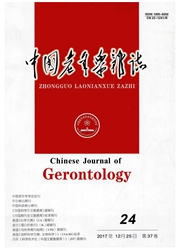

 中文摘要:
中文摘要:
目的系统评价替罗非班防治老年人经皮冠状动脉介入治疗术后慢血流/无再流的临床疗效与安全性。方法电子检索Cochrane对照试验资料库(2012年第2期)、PrimMed(1966年~2012年7月)、EMbase(1900年~2012年7月)、中国生物医学文献数据库(CBM,1978年~2012年7月)、万方数据库(1978年~2012年7月)以及Google学术搜索。由2名评价者独立评价纳入研究的质量、提取资料并交叉核对,对同质研究采用RevMan5.0软件进行Meta分析。结果共纳入8个研究,包括827例患者。Meta分析结果显示:术前给予替罗非班可明显改善TIMI血流、TIMI计帧数(CTFC)和心肌Blush分级,减少无复流现象的发生率。替罗非班可明显降低术后1个月主要心脏不良事件发生率,并可改善术后1月左室射血分数,并且未明显增加出血并发症的发生率。结论老年患者PCI术前给予替罗非班可以改善TIMI血流、心肌Blush分级和CTFC,起到预防无复流/慢血流的效果,而且在提高左室射血分数和减少心血管主要不良事件的发生率方面,均可获得较好的效果。
 英文摘要:
英文摘要:
Objective To evaluate the clinical efficacy and safety of tirofiban for preventing slow-flow/no-reflow phenomenon after percutaneous coronary intervention (PCI) on elderly patients. Methods The Cochrane Central Register of Controlled Trials (CENTRAL) (Issue 2, 2012), PubMed, EMbase,CBM , Wanfang database and Google Scholar were searched. Two reviewers independently evaluated the quality of included studies and extracted the data. Meta-analysis was performed by RevMan 5.0 software. Results Eight randomized con trolled trials (RCTs) involving 827 patients were included. The results of recta-analyses showed that intracoronary and intravenous tirofiban reduced the incidence of no-reflow/slow-flow and reduce Corrected TIMI Frame Count (CTFC) as well as myocardial blush grade. For ad- verse reaction, tirofiban reduced the incidence of major adverse cardiac events(MACEs) in patients 1-month after PCI. In addition, tirofiban improved left ventricular ejection fraction(LVEF) in patients during 1-month after PCI, but not improving the incidence of bleeding compli cation. Conclusions Tirofiban is beneficial in preventing no-reflow/slow-flow, in reducing CTFC, in improving myocardial blush grade, and reducing 1-month major adverse cardiac events (MACEs) in patients after PCI. It also likely improves left ventrieular ejection fraction(LVEF) in patients during 1-month after PCI. However, there could be a moderate possibility of bias with regard to patient selection, performance and publication because of the small number of the included studies. Larger sample size, high-quality RCTs are needed for more reassuring analysis.
 同期刊论文项目
同期刊论文项目
 同项目期刊论文
同项目期刊论文
 期刊信息
期刊信息
